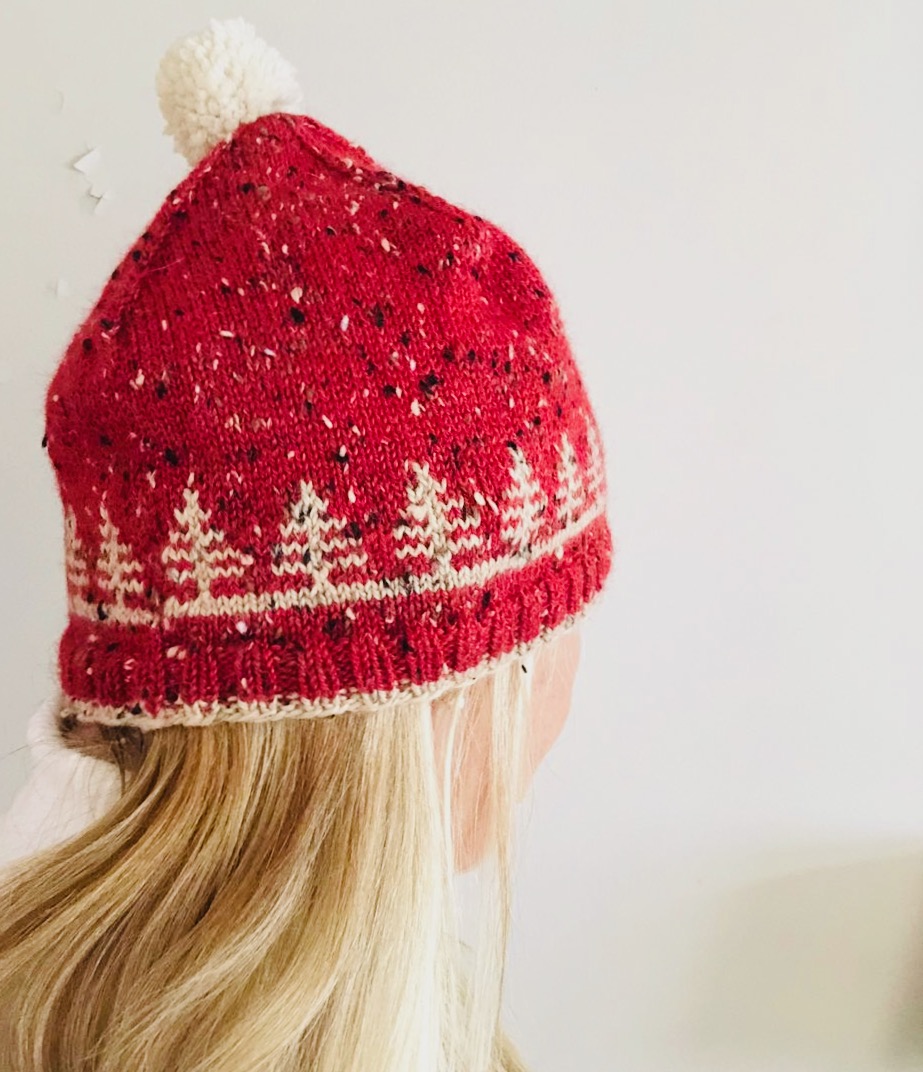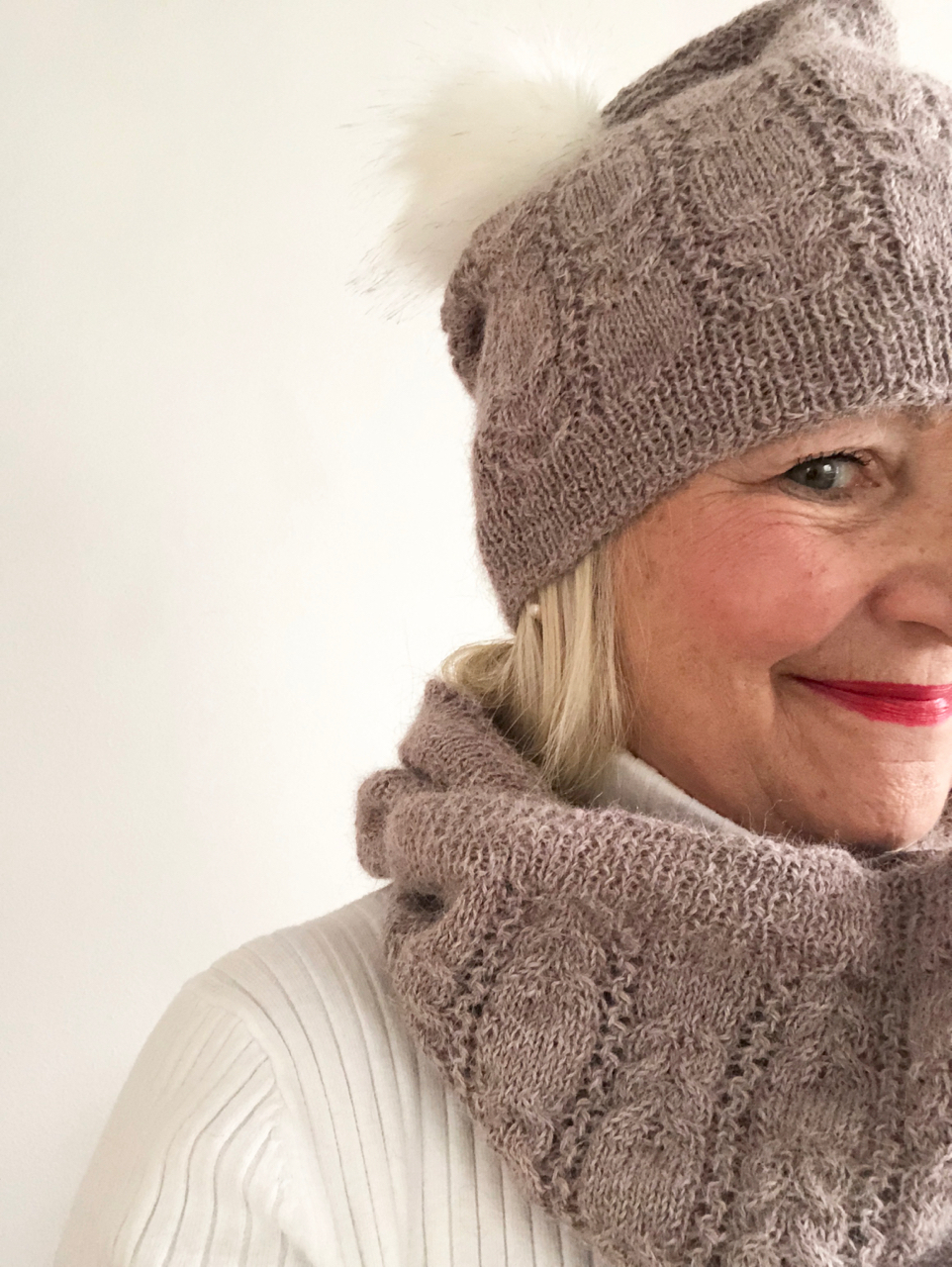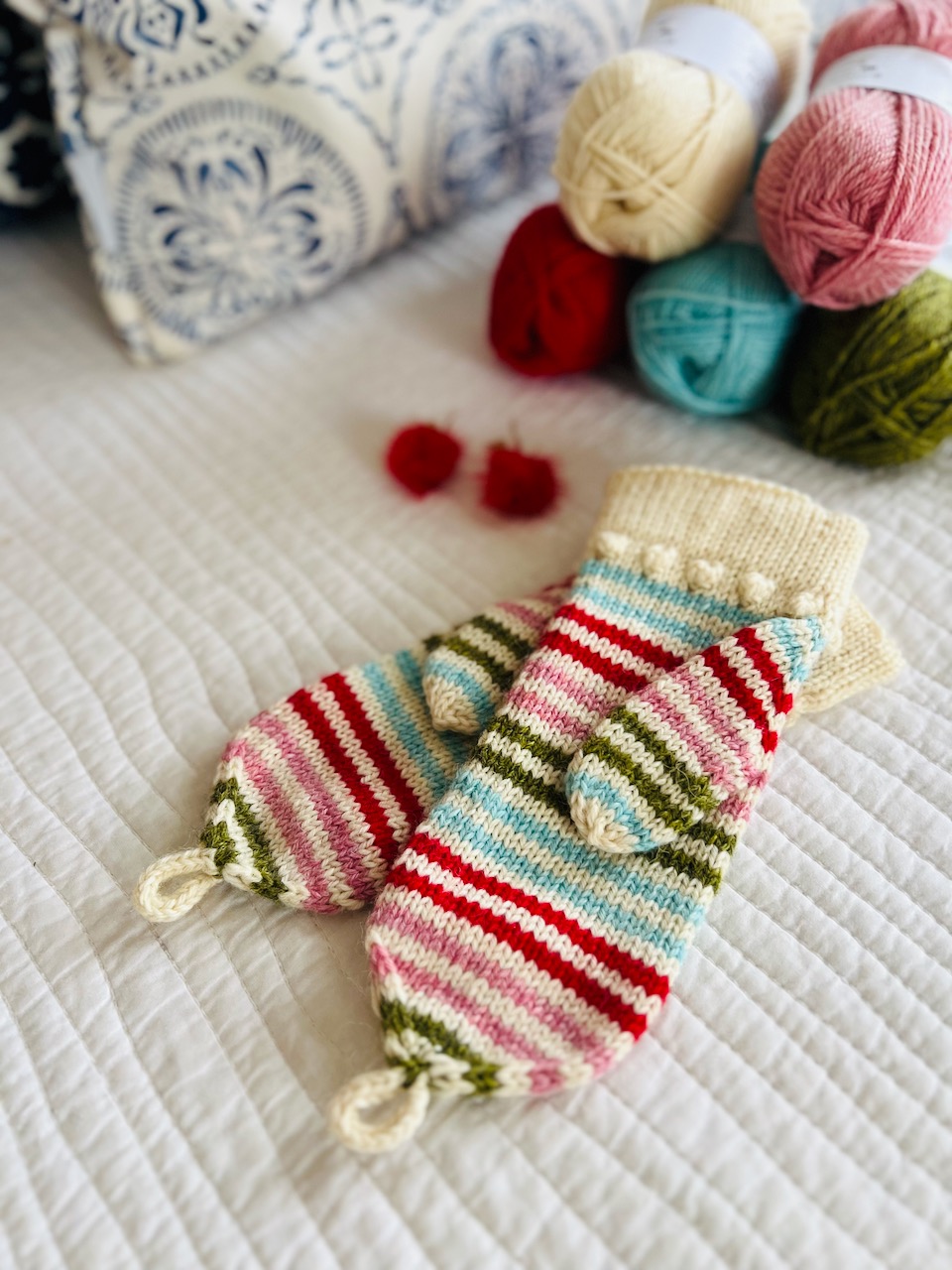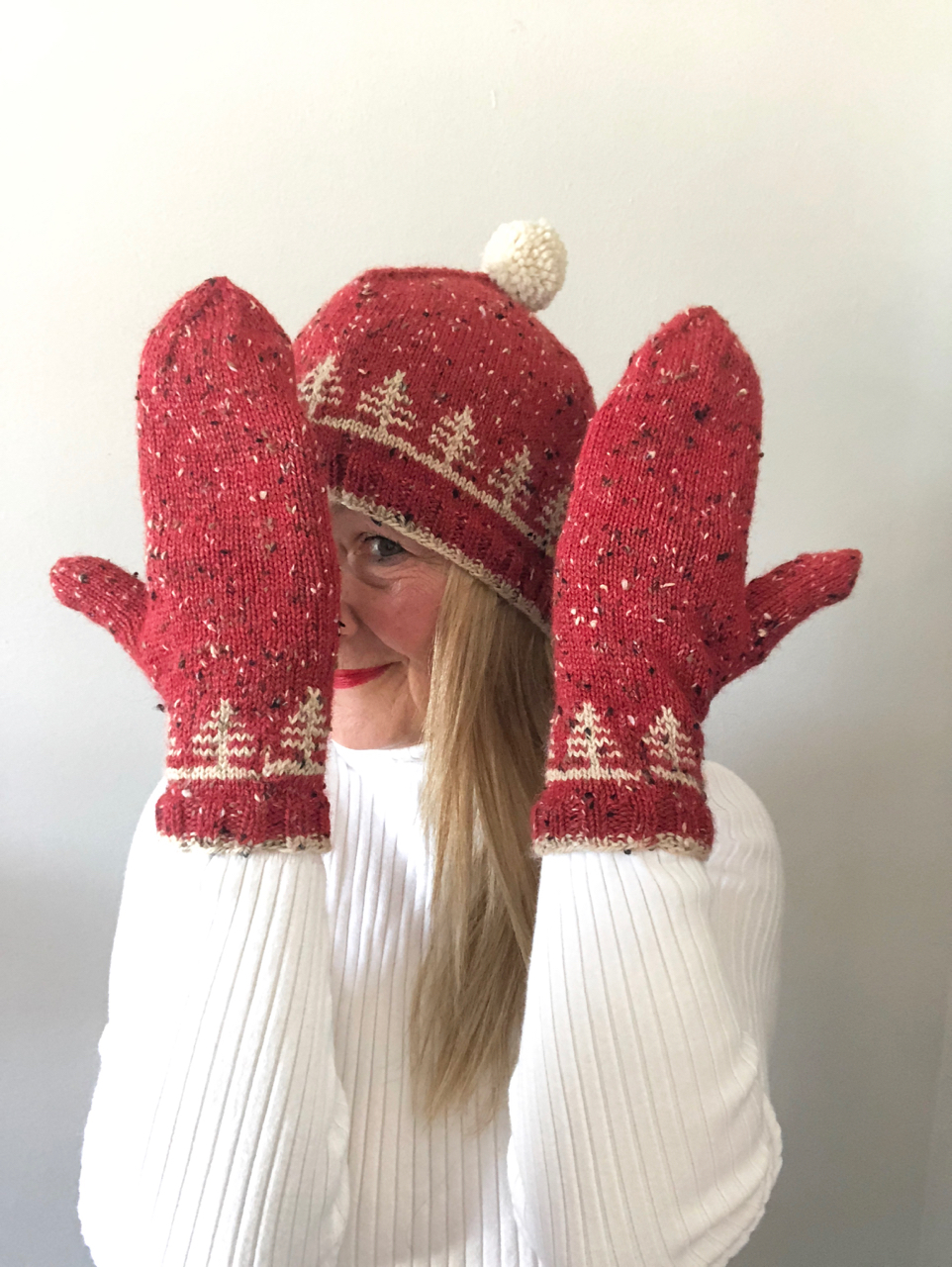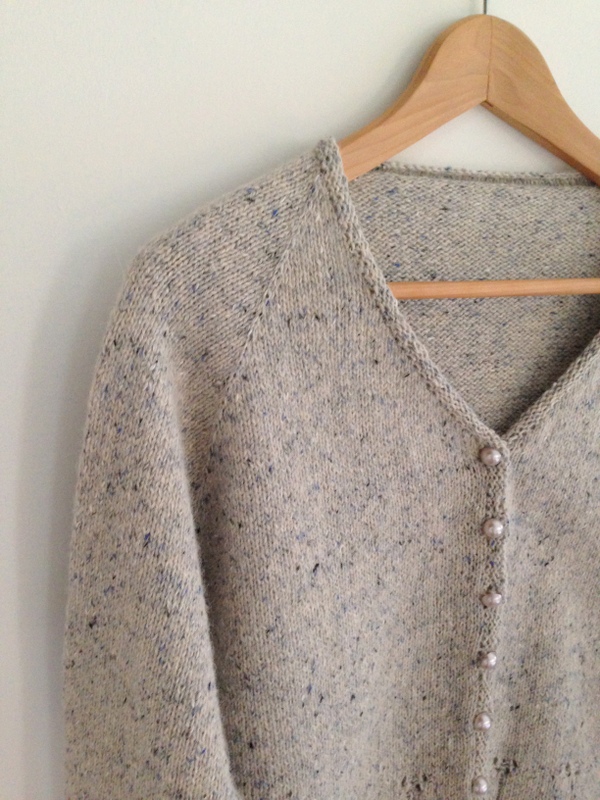Part II: Choosing Your Yarn
In Part I of How to Knit a Favorite, I mentioned that what I like best about my FS is its weight (or lack thereof). It is extremely light and airy and I think that’s why I enjoy wearing it so often. With airy openness as the first goal for this new sweater, it was clear that yarn was going to be the prime mover of the project. I took a deep dive into stash with a vague memory of something fluffy and pale blue and possibly very light. Huzzah! Blog history tells me that I’ve had this sweater quantity of Drops Brushed Alpaca Silk in my stash since March of 2016!
Knit Your Favorite Weight

This yarn is heavenly. It is soft and fluffy and lighter than air. The color is perfect for knitting my favorite. The drawbacks are that this blend of brushed alpaca and mulberry silk is likely to be very warm, much warmer than the original FS. Also, it is not going to be machine washable. I’m willing to compromise on these factors because as I swatched, I realized that the Drops BAS has an almost identical hand to my FS. These are compromises you’ll need to consider as you choose your yarn.

Is your favorite sweater heavy or light? Can you recognize what weight it is? This is Step One in determining the best yarn for the job. Here’s a handy reference to help you navigate the world of yarn weights. There’s a wealth of knitting info on the Craft Yarn Council website.
Knit Your Favorite Fiber Content

Check the content label inside your garment. Is your FS made of wool, cotton, alpaca, cashmere or linen? Or is it, like mine, made out of some synthetic fiber or blend? Fiber has varying levels of warmth and weight and these are important considerations to think about as you’re choosing your yarn. Animal fiber tends to be warmer than plant fiber, but there are much broader implications within the world of fiber. Here are some general tips about common yarn content:
- Basic sheep’s wool: In its natural state (not superwash) this is a very warm and toothy yarn that is particularly great for color work. It tends to be scratchy and shrinks and felts readily. Remember that sheep fleece can vary wildly depending on the breed.
- Superwash sheep’s wool: This wool has its microscopic scales and barbs removed chemically. Those scales are what give wool its warmth and wooliness. With the barbs and scales removed, superwash wool tends to be less scratchy and resists felting and shrinking. It’s also less warm than natural wool and can have unpredictable behavior during blocking.
- Alpaca: Alpaca fleece is very silky, very drapey and very warm. Because of its weight and silkiness, it’s not the best choice for cables or any other surface that requires stitch definition. It is hypo-allergenic.
- Merino: I find merino to be the softest of the sheep’s wools. The merino sheep has very curly locks which gives this yarn a lovely stretch and bounce. This stretch produces an even stitch texture and a clean homogenous fabric. It takes dye well and is one of the best all-round fibers for knitting.
- Cotton: Cotton is heavy and has little to no stretch. I think it’s best when blended with another fiber such as wool, linen, bamboo or even synthetics. It is cool and breathable, machine washable and can be very pretty as it degrades.
- Linen: Linen is the gold standard for cool summer knits. It produces a rather rustic fabric with a lovely drape. It has absolutely no stretch so stitches can look uneven. Just like its woven counterpart, it gets better with every washing.
- Cashmere: This is a very luxurious and delicate fiber from the cashmere goat. Extremely light, soft and very warm, cashmere is beautiful next to the skin, but not terribly durable. It’s expensive and moths love it.
- Silk: This lux fiber is deliciously smooth to knit with and lends a gorgeous glow to knitted fabric. Silk boasts superior warmth and is lovely next to the skin. It is inelastic though, making even slight changes in tension appear as errors. Pilling is a big problem, especially in the cheaper, short staple varieties.
Favorite Fabrics



Is your favorite a dense scratchy knit or a loose drapey one? Are there cables, openwork or color work? These are qualities that will impact your needle selection and ultimately your fabric as you move forward toward knitting some swatches. My yarn has quite a halo. Even though the yarn appears fairly thin, I’ve gone with a 4.50mm (US 7) needle which is generally appropriate for a worsted weight yarn. A larger needle creates more open stitches that provide a place for the halo to “live”. The resulting fabric is loose, open and practically weightless.
If you’ll be working cables, you’ll likely want a firmer fabric when you knit your favorite. A tighter gauge creates sharper stitch definition and controls stretch. Cables contain more yarn, making cabled fabric heavier. If you’re working lace or openwork, you’ll want a looser gauge to create drape and open up eyelets. For flat fabric or knit/purl combinations, start with the ball band information. Start swatching with the recommended needle size and move upward or downward from there.
Swatch Your Favorite
Whether you love it or hate it, swatching is an important part of knitting anything. When you knit a favorite, swatches provide essential information about the stitch and row gauge that is produced with a given yarn and needle. It is impossible to make knitting calculations without this data. In addition, swatches give us a glimpse of the finished fabric and help us determine how to block and care for the finished article. In short, swatch knitting is absolutely necessary.

To start, cast on a few stitches (between 12 and 24) with a needle you think will work. Just knit a few rows to make sure you like the density of the fabric. Once you’re happy with the basic needle size, go ahead and cast on in appropriate multiples for any stitch pattern or cable that you’ll be using for the finished item. I like to make a border on all sides to discourage curling. Make sure to include all the stitches you’ll be using including the basic stockinette or garter, ribbing and edge treatments. Your swatch should be at least 4″ square, preferably larger. You’ll be amazed at what you’ll learn once you start to take measurements! For example, the row gauge in this mosaic swatch is wildly different from straight stockinette. The flat areas of the cabled swatch have a stitch gauge of about 5 sts per inch. Over the cable panel, I’m getting over 7 sts per inch!


In Part III, we’ll gather all this useful information and use it to help knit your favorite sweater!







